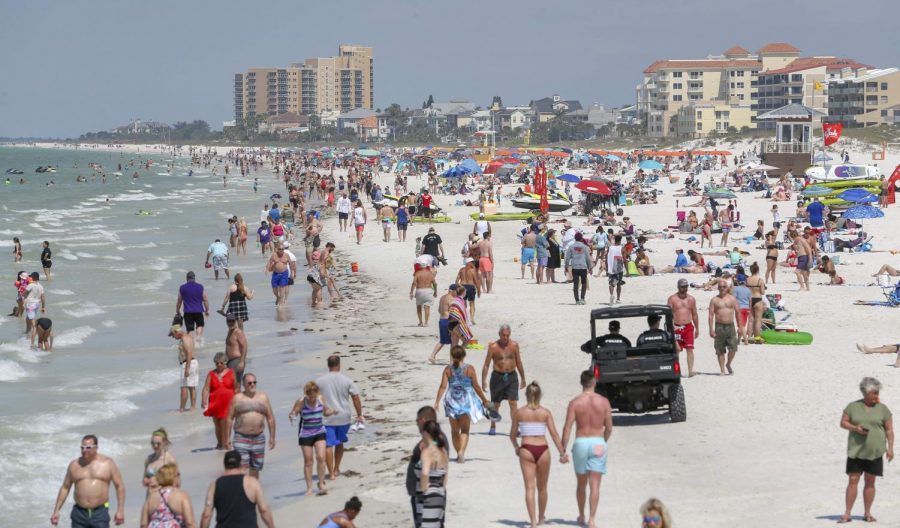University lays out plans for fall break, spring return
Beachgoers enjoy a day in the sun on a beach in Florida during Spring Break 2019.
Oct 22, 2020
In the last two weeks before fall break, University students will be asked to restrict their movements significantly in preparation for their returns home.
“Students who plan to travel during Fall Break should limit themselves to essential activities only, such as attending in-person class, testing, visiting the pharmacy and buying groceries between Nov. 6 and Nov. 20,” Chancellor Robert Jones wrote in a Massmail sent Tuesday morning. “Limiting your activity may help you remain COVID-free before you return home and may help keep you and those you care about safe from possible virus spread.”
The same applies for students who are staying in the Champaign-Urbana community during and after fall break.
According to Jones, more than 1,000 students have faced University discipline for COVID-19 policy violations, including not participating in on-campus testing.
Once students return in the spring, a new set of testing protocols will begin.
Get The Daily Illini in your inbox!
All students must receive two negative test results on campus between Jan. 15-24, no sooner than three days apart, before resuming regular activities.
The University laid out the following recommended testing schedule based on students’ years in school:
Graduate students should be tested on Jan. 15 and Jan. 19.
Seniors should be tested on Jan. 15 and Jan. 19. (Seniors who live in University Housing will test on Jan. 17 and Jan. 21.)
Juniors should be tested on Jan. 16 and Jan. 20. (Juniors who live in University Housing will test on Jan. 17 and Jan. 21.)
Sophomores should be tested on Jan. 17 and Jan. 21.
Freshmen and new students should be tested Jan. 18 and Jan. 22.
“Please give yourself plenty of time to receive two negative test results and ensure your second test is on or before Jan. 22,” Jones wrote. “Students who fail to follow our testing policies are subject to student discipline.”
The University clarified its testing policies for the rest of the year and spring semester shortly after announcing the cancellation of spring break.
“Travel is a real risk for reintroducing infection to a community that has it under control,” said Rebecca Lee Smith, an epidemiologist and professor in AHS. “There is a very clear signal of the spread of infection throughout the country after spring break.”
The Shield Target team, which Smith co-leads, determines on-campus testing frequency and other related decisions. Smith’s team made official recommendations that led to the University’s plan, but not before consulting the graduate student on the team who works as a TA with undergraduates, lending a student perspective to the suggestions the team made.
“One of the recommendations that we are making is to delay the start of the spring semester, but to not delay the start of students returning to campus, simply so that we can have a longer period of testing before people start their activities,” Smith said. “So, we’re recommending that people come early and start testing and that they self-quarantine until they have two negative tests.”
The hope is that the extended time frame and the slightly flexible self-quarantine system will help to contain the spread of coronavirus across campus.
The first test will be used to catch anything that may have happened in the previous week, and the second to check for any exposure that the student may have had while traveling. As always, measures of social distancing and wearing masks will be essential for containing the virus.






